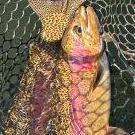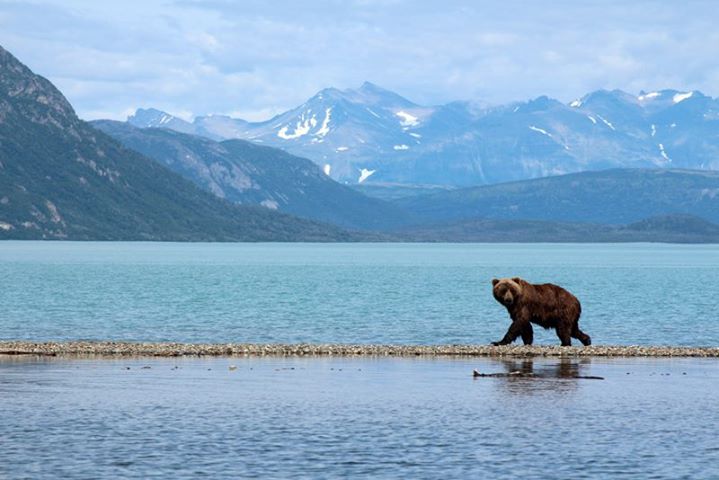-
Posts
18,931 -
Joined
-
Last visited
-
Days Won
123
Content Type
Profiles
Forums
Blogs
Events
Articles
Video Feed
Gallery
Everything posted by Phil Lilley
-
Well... I think I'd like to offer you all a look at our online tackle store, months in the making. To look at it, you may not appreciate everything that goes into setting one of these monsters up unless you've done one. X-CART will do everything, I'm just using a small part of it. I haven't mastered the design portion yet... html is not my language, sorry to say. The homepage isn't set up and no, I don't know how- yet. But get thru the first and second pages and you'll find all the stuff for sale. If you would, let me know if you see any broken links, missing pics or anything else that's not right. The payment and shipping should be working... so buy away. But please be patient with us if something goes wrong. http://lilleystacklestore.com/xcart/home.php I do have a lot more items to add so check back. If you register, we will be sending out periodic sale flyers, when I figure out how to work that module.
-
Boy, has this month flew by. Well it's only the 22nd but it might as well be over. It may give up a few more crappies It's been a good crappie season so far for me. It started early when Vince and I found a good spot on Taney just off the Landing Wall. Then we found them in Roark, which is an annual occurance for us. Been over to Cricket a couple of times and added just a few to my total. But all in all, it's been good. I hope to get into a few whites this spring. The last 2 years haven't been good wb seasons, for alot of people, esp around Forsyth. I'll try to get over to the Spring and fish with my buddy Paul Crews one of these days. Then there's a trip over to Sooner Lake with John Johnson in April, hopefully. Way too many choices and opportunities to do them all. Rain, not temps, will dictate fishing conditions the next week or 10 days. The forecast says 70's and even 80's but rain/thunderstorms will tell the tale. Rivers will be washed out, lakes will rise, tailwaters will see lots of generation- may be. Last year, a heat wave in April brought crappie to the banks and whites up the rivers and onto the shoals. After a few days, it got cold and stayed cold. Some say it really screwed up the spawn. Time will tell. My fear was the same thing may happen again this year but there's no cold spell in sight- yet. But gosh, we still have more than a week of March and all of April... lots of chances for cold weather and even SNOW. Hard to believe right now. Our online store in working, not 100% ready but functional. The home page is still stating it's a demo copy. I'm having a terrible time with the design part of this software. But I should master it in the next couple of days. But until then- go take a look. Even order something if you feel inclined. Send me an email and let me know what you think. http://lilleystacklestore.com Better go- Sara and Josh have landed. They are making a stop here on their way from Denver to Nashville for the weekend. Josh is putting in flying hours towards his commercial pilots license.
-
Haven't fished today but the day is young. Running 4 units today- I guess because of the rain and 6-inch rise in lake level on Table Rock. I don't look for it to continue, at least not this much for this long. But more rain is in the forecast. Fishing in the main lake has been slow today. Trout don't like it when the Corp turns on the refrig. Water temps in our area went from mid 50's to low 40's in a matter in minutes this morning. They should be back to snuf tomorrow. More later when the troops report in.
-
Had 3 guests run over to Cricket this morning. I showed them where to go and see what they brought back!!! The caught them up in Cricket, past the mouth of Long. I think they fished the deep side and caught them on swimming minnows close to the bank and off the bank in the trees. Very nice!
-
Well... I was just giving him (or someone) the bizz too... I've never been to the spot I described although I know that cove has been hot, according to some of our guides. I was hoping it was close to Fishrman's spot- wild guess I know- but worth the try. Anywhere around Bridgeport is good- so I've heard. REALLY! :) :)
-
HillbillyJim- launch at Bridgeport and head to your right up James. The first cove on your right- half way back is a good sized cedar. Fish out from it and next to it using smoke swimming minnows or chartreuse sm's and you should have your limit. Disclaimer: Crappie spots are hard to come by for some, easy for others. This may or may not be a good spot... any area in the Bridgeport/James River Arm is good right now, if you have the touch and patience.
-
Early and late and even after dark is the best time for whites, esp on a sunny day.
-
They've seemed not to be size shy right now. I'd say to add some #18's and #20's but don't think you need to. Tie some lite and dark gray bugs as well as some olive and tan. Need some zebras too!!
-

Birthday Greetings 3/22/2007
Phil Lilley replied to Danoinark's topic in General Angling Discussion Archives
Catching up with me!!! Have a great day! -
I order from my local tackle supplier, Crawleys and from Cricket Creek Marina. And I do think I have the minnow you're referring to. I have plenty in stock right now. Have a big order going out today.
-
Spoonbill: about 30 pounds caught on 4 lb line and a jig fishing below Grand Lake Dam for whites. Catfish: about 10 lb flat head caught on a trotline in the Neosho River when I was a kid.
-

Measuring Success in Fly Fishing
Phil Lilley replied to Rabbi Eric Eisenkramer's topic in General Angling Discussion Archives
Rabbi- thanks for sharing! What waters do you frequent? Is the weather in NY as warm as it is here in Missouri? We've been having incredible spring weather the last few weeks. In my "old age", my measuring stick has migrated a bit to the side of not the length of number of the fish brought to hand but to the cast placement and hookup of a fish whom I was 'shooting' for. That and just the overall experience of being on the water in God's creation. Thanks again! -
Catch and release only??? Never heard of such a thing in MO. Where is it?
-
Sorry- didn't see your post. I have not talked to AJ or any of the crew. Not sure how much they'll share with me but I'll try to give him a call tomorrow and see what they say about the walleye population.
-
http://waterdata.usgs.gov/nwis/uv?07054080
-
http://waterdata.usgs.gov/nwis/uv?07054080 River says it's 12 inches high at Bradleyville so it might not be good tonight. I've heard of some whites and walleye at night at the Maiden Hole. Anyone fishing? I bet it's getting crowded about now. Anybody?
-
Not the exact spot... but what part of the lake were you on?
-
Wind wasn't bad till about 11 am.
-
Mr Babler had a trip this am with Mr Steiner and I tagged along. We put in at Yocum bridge up in Long Creek and fished the east bank across the mouth of Yocum, the north bank of the mouth, out north or downstream in Long toward the dock we fished the left or west bank where the house burned a few years ago and then back to the first bank. Water was 57-59 degrees. We found crappie scattered mostly in 6-10 feet of water and well off the bank, all but one which was right on the bank. One male white bass mixed in and several k's and l's and one mean mouth. Fished with smoke, motor oil and chartreuse swimming minnows on an 1/8th oz head. Started at 8:30 and quit at 11:30 am. Fish have already been aten.
-
SF- you're right on the camera. Hard to make the fish set still for a pic. Si- I have no idea what you're talking about. Did get to meet FlyTrap from OAF yesterday.
-
Soft hackles if it's breezy- working excellent. Black #18 are perfect but try others just for the fun of it. They hit hard and you miss a bunch and even pop some off. Also have a variety of scuds on hand. They are liking the bigger ones it seems- #16's and even a #14. And of course have some zebra midges too. Lots of rainbows below the dam... and all over really. Hope you can drop by the shop. Phil
-
Have a great day today- and thanks for reporting back on your success. We're fishing this am with Babler someplace for crappie... may be Long Creek.
-
One more guide trip... took Mr. Steiner to the dam for some good old wading. Started above outlet #2 about 8:30 am, throwing a #20 black soft hackle at 'em and they took it pretty well. Good current and some fish rising. Lots of people still fishing outlet #2 just like in the fall... what's up with that??? Oh well, plenty of fishing and fishing opportunities for everyone. We worked down to rebar and switched to a double rig- black #20 zebra and a #18 brown scud for Darrell at the top of the shoot and he hooked rainbows on every cast for 30 minutes. They'd only hit the zebra. I stood above him and had a red zebra over a #14 grey thin-skin scud and I caught rainbows on every cast for 30 minutes but only on the scud. Funny. Flipped a switch and they quit. Walked down to the bottom of the narrows and tied on another soft hackle and finally started hooking fish again. Went to lunch little after noon- good morning. After lunch, we started at Rocking Chair, wading from the north side... and we didn't move much till 5 pm. Water was up over a foot over normal and not much current. There was an intermittent breeze- upstream and then down- and the trout bit when it riffled the surface. Darrell fished exclusively with a #20 black zebra (silver head, silver rib) under an indicator 6 inches and I switched around with alot of different bugs including a couple of experimentation soft hackles and zebras which did fair. We did well. All day, lots of rainbows, no browns and nothing over 14 inches. All were colorful and healthy though. Pics... First is the fish ladder they're working on (I guess) running up from outlet #3. It's going to be a REAL long ladder to go all the way to the building. Hope it works. Others are from me playing with my underwater camera... again. Couple of new avatars- I uploaded them to the avatar directory.


